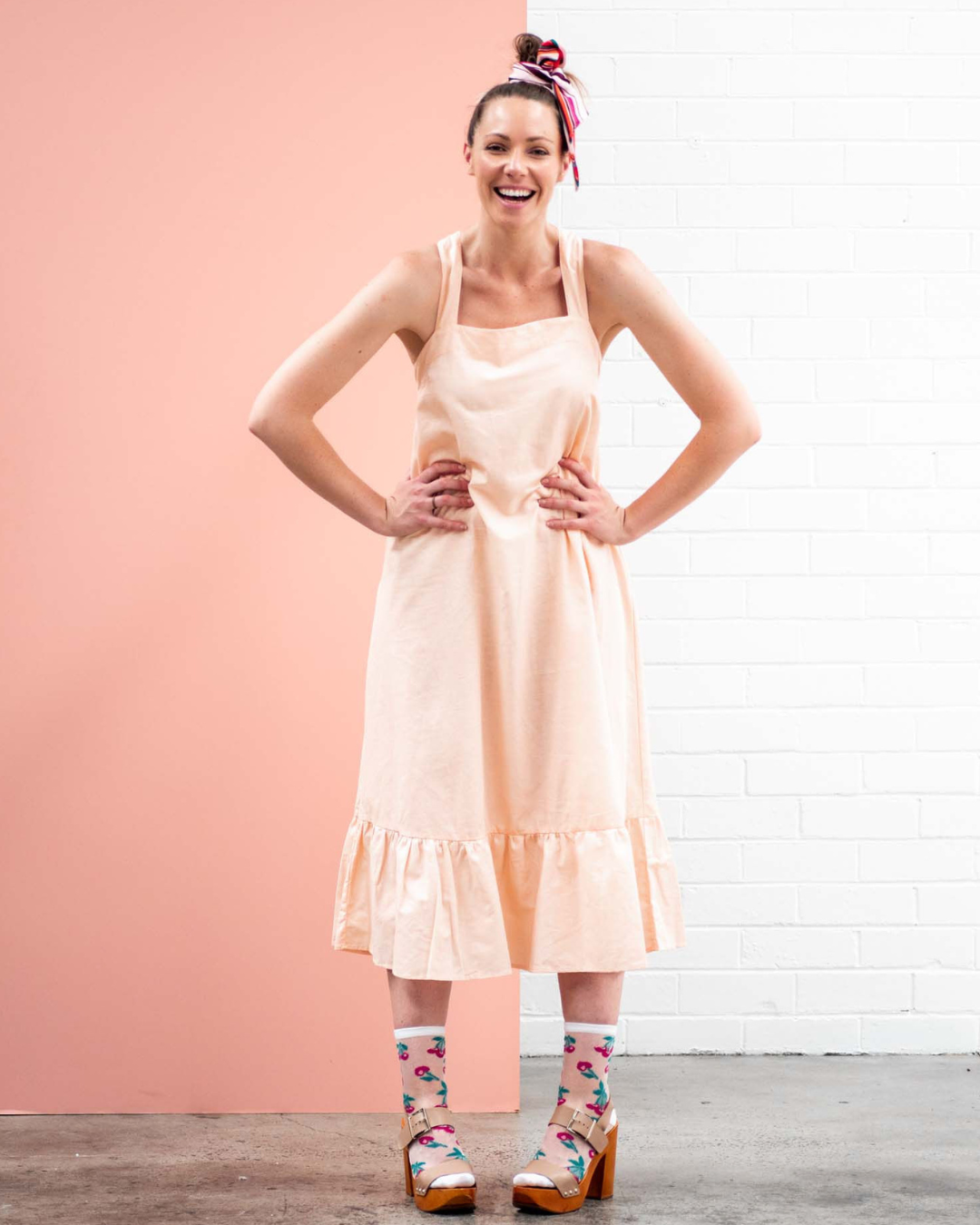Fast fashion has dominated the industry for decades, feeding consumers a constant cycle of cheap trends and disposable clothing. Shein, Temu, H&M, and Zara have built billion-dollar empires on exploitation, overproduction, and waste.
But something is shifting. Consumers want—and need—more meaning.
They’re tired of clothing that falls apart after a few wears. They’re tired of overstuffed closets full of things they don’t love. They’re tired of learning that their purchases have contributed to modern slavery and environmental destruction.
People want quality over quantity, they want brands with integrity and they want slow fashion. People are demanding better.
According to Globe Newswire, the slow fashion industry is projected to be worth $15 billion by 2030—and yet for fashion founders—running a slow fashion brand can feel impossible.
And I get it. I know the struggle. I went through it for years running my handmade circular fashion label and trying to compete with fast fashion prices was one of my toughest challenges running when I ran one of the largest online stores for ethical and sustainable fashion.
If you're running an ethical, sustainable, handmade or slow fashion brand too, you know the feeling.
You're watching fast fashion brands pump out knockoffs of independent designs and sell them for mere dollars.
You’re constantly justifying your prices to customers who have been conditioned to expect $10 dresses.
You're pouring your heart, time, and money into your brand, only to feel like no one sees you.
It’s frustrating. It’s exhausting. But it’s not your fault.
Fast fashion has rigged the system.
For decades, fast fashion has convinced people that clothing should be cheap and disposable. Fast fashion has flooded social media with hauls and micro-trends that last only weeks—sometimes days. Fast fashion has created an industry that thrives on overconsumption, planned obsolescence, and unethical labour practices.
But that system is starting to fall apart.
Slow fashion is the future—if you know how to position your brand, and if you do it right, it's a big opportunity for you.
Because while fast fashion floods the market with mass-produced, forgettable pieces, slow fashion brands like yours offer something real, intentional, and valuable.
You design with purpose, not just for profit.
You create quality, meaningful products that your customers love.
You’re part of a movement that’s reshaping the industry for the better.
But having a great product isn’t enough when we're up against a fast fashion industry with billions of dollars.
If you don’t know how to communicate your value, attract the right audience, and sell without compromising your values, you’ll always struggle to cut through and you'll constantly feel like you’re fighting an uphill battle.
That’s why I’m running my workshop, F*ck Fast Fashion: The 7 Secrets of Successful Slow Fashion Brands.
If you're a slow fashion founder who wants to increase your impact, build a profitable brand, and grow without competing on price, I want to show you how, and if you’re serious about growing a profitable slow fashion brand without sacrificing your values, I’m diving deep into these strategies in my workshop.
Join me for this month’s LIVE online workshop, F*ck Fast Fashion: The 7 Secrets of Successful Slow Fashion Brands, and learn practical strategies to help you stand out and scale ethically.
Because f*ck fast fashion.
Are you with me?
Claire x




